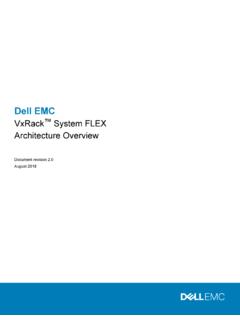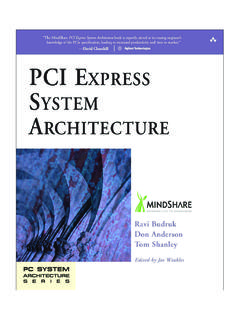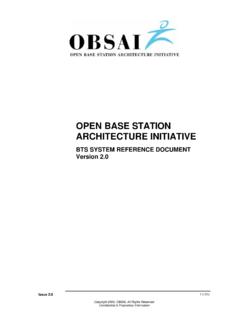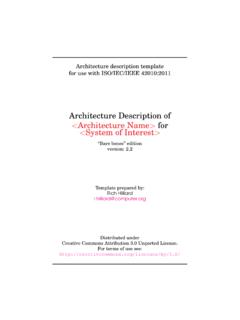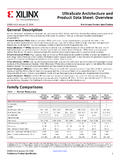Transcription of Architecture and components of Computer System Memory ...
1 Architecture and components of Computer SystemMemory Classification Course In Computer ArchitectureIFES lide 1 With respect to the way of data access we can classify memories as:- random access memories (RAM),- sequentially accessible Memory (SAM),- direct access Memory (DAM),- contents addressable Memory (CAM).Access time - the interval of time between the instant of data read/write request, and the instant at which the delivery of data is completed or its storage is modulesSAM/DAM memories:CAM memories find applications in:switches, routers in cache controllersCD-, memoriesHDDsSource of images: Wikipedia. Architecture and components of Computer SystemMemory Classification Course In Computer ArchitectureIFE Course In Computer ArchitectureIFES lide 2 Random access Memory - the access time to any piece of data is independent to the physical location of data.
2 Access time is access memories can be further classified as:- read-write memories (usually referred to as RAMs),- read-only memories (ROM).Among random access and read-only memories we distinguish:RAMROMS tatic RAM (SRAM)Dynamic RAM (DRAM)Non-volatile RAM (NVRAM)Programmable ROM (PROM)Erasable Programmable ROM (EPROM)Electrically Erasable Programmable ROM (EEPROM);FLASH Memory Architecture and components of Computer SystemRandom Access Memories Course In Computer ArchitectureIFE Course In Computer ArchitectureIFES lide 3 Static random access memories (SRAM) - one-bit Memory cells use bistable latches for data storage and hence, unlike for dynamic RAM, there is no need to periodically refresh Memory of one-bit cell for static random access Memory *In order to write data into SRAM cell it is required to activate line SEL and provide bit of information and its inverse at inputs D and D operation requires to activate SEL line.
3 The bit of data is available at D and Cons:- faster and less power hungry than DRAMs,- more expensive (6 transistors per cell).*Source of images: J. Biernat, Computer Architecture , OWPW, Wroclaw, 2005. Architecture and components of Computer SystemRandom Access Memories Course In Computer ArchitectureIFE Course In Computer ArchitectureIFES lide 4 Dynamic random access memories (DRAM) - each one-bit Memory cell uses a capacitor for data storage. Since capacitors leak there is a need to refresh the contents of Memory periodically (usually once in =0,5 2 ms). Memory cell for dynamic random access Memory *Both read and write operations require to open the transistor by providing high voltage on line SEL.
4 The bit of data to be written must be given at line IN/OUT. During reading operation the bit of data is available at the same and Cons:- less expensive (only one transistor per cell),- slower than SRAM.*Source of images: J. Biernat, Computer Architecture , OWPW, Wroclaw, 2005. Architecture and components of Computer SystemRead Only Memories Course In Computer ArchitectureIFE Course In Computer ArchitectureIFES lide 5 Programmable read only memories (PROM) - are programmed during manufacturing process. The contents of each Memory cell is locked by a fuse or antifuse (diodes). PROMs are used for permanent data read only memories (EPROM) - there is a possibility to erase EPROM with ultraviolet light (about 20 minutes) what sets all bits in Memory cells to 1.
5 Programming requires higher voltage. Memory cells are built with floating gate transistors. Data can be stored in EPROMs for about 10 erasable read only memories (EEPROM) - erasing does not require ultraviolet light but higher voltage and can be applied not to the whole circuit but to each Memory cell separately.*Source of images: of EPROM chip with glass window admitting UV light Architecture and components of Computer SystemOther Types of RAMs Course In Computer ArchitectureIFE Course In Computer ArchitectureIFES lide 6 Non-volatile random access Memory (NVRAM) - with this name we refer generally to any Memory which does not lose information when power is turned off.
6 Except from ROMs, NVRAM also include conventional volatile random access memories with battery backup such as BIOS Memory (Basic Input Output System ).*Source of images: Memory chip with battery*Flash Memory (FLASH) - by this name the cheaper variant of EEPROM is described. In case of FLASH Memory not separate bytes but blocks of bytes are being erased at the same time. It makes the construction of such memories cheaper in comparison to regular applications of FLASH memories: pendrives, Memory cards Architecture and components of Computer SystemContent Addressable Memories Course In Computer ArchitectureIFE Course In Computer ArchitectureIFES lide 7 Content addressable memories (CAM) - also known as associative memories; it is a type of Computer Memory used in applications requiring high speed searching.
7 Such Memory replies with hit or lack-of-hit status when some data vector (pattern) is given at its input. Searching consists in comparing of all data words stored in Memory with the given pattern. The mask word indicating all essential bits also must be taken under consideration. If search finishes with hit one of the compliant words is copied to the output buffer. Which word it is determined by the multiply match resolver (MMR).*Source of image: J. Biernat, Computer Architecture , OWPW, Wroclaw, structure of an associative Memory * Architecture and components of Computer SystemCAM/SAM Course In Computer ArchitectureIFE Course In Computer ArchitectureIFES lide 8 Applications of CAMs:- network routing and switching devices where fast resolving of data recipients` addresses is required,- CPU and disk drive cache addressable memories (SAM) - access to data is realised in a sequential fashion.
8 Fully sequential are buffers organised as FIFO, LIFO, etc. queues. They find their applications in devices controllers, microprocessors, access Memory (DAM) - in literature usually by this term authors refer to memories with block organised data. Access to blocks is direct. However data within blocks is accessed sequentially. As examples we can indicate: magnetic and optical disk drives, tape memories, etc. Architecture and components of Computer SystemSequentially Accessible Memory Course In Computer ArchitectureIFE Course In Computer ArchitectureIFES lide 9 Hard disk drive (HDD) - is a kind of mechanical device Memory where data is encoded in the form of magnetic impulses on platters covered with magnetising ferromagnetic disk drive memoryThe typical HDD consists of: stepper and linear motors, read-and-write heads, platters and disk controller.
9 The controller includes central processing unit, RAM and ROM memories and data amplifiers circuits. Communication between CPU and HDD requires transmission of data, commands (to appropriate registers of HDD controller) and status controllerdataaddresssteeringheadsplatte rs Architecture and components of Computer SystemSequentially Accessible Memory Course In Computer ArchitectureIFE Course In Computer ArchitectureIFES lide 10 Physical organisation of disks:head - corresponds with one side of a platter;track - circular area on platter where data is stored;sector - a fragment of track that is the smallest portion of data to be read or written on disk.
10 Cylinder - a set of tracks with the same number belonging to different = number_of_heads*number_of_tracks*number_ of_sectors*512 [B]Physical organisation of a disk Architecture and components of Computer SystemSequentially Accessible Memory Course In Computer ArchitectureIFE Course In Computer ArchitectureIFES lide 11S (BOT) - 11 bytes 00h, D1 0A1 FCh, Z1 12 bytes 0 FFh,S 10 bytes 00h, D3 5EA1h, ID sector address ID: byte 1 track number, byte 2 head number, byte 3 sector number, byte 4 sector status (invalid sector, sector replacement in spare area), ECC-1, 2 byte of error correction code (correction up to 11 errors), Z2 5 bytes 00h, D4 5EA1h, DATA 512 bytes, Z3 3 bytes 00h and 17 bytes 0 FFh, Z4 about.
